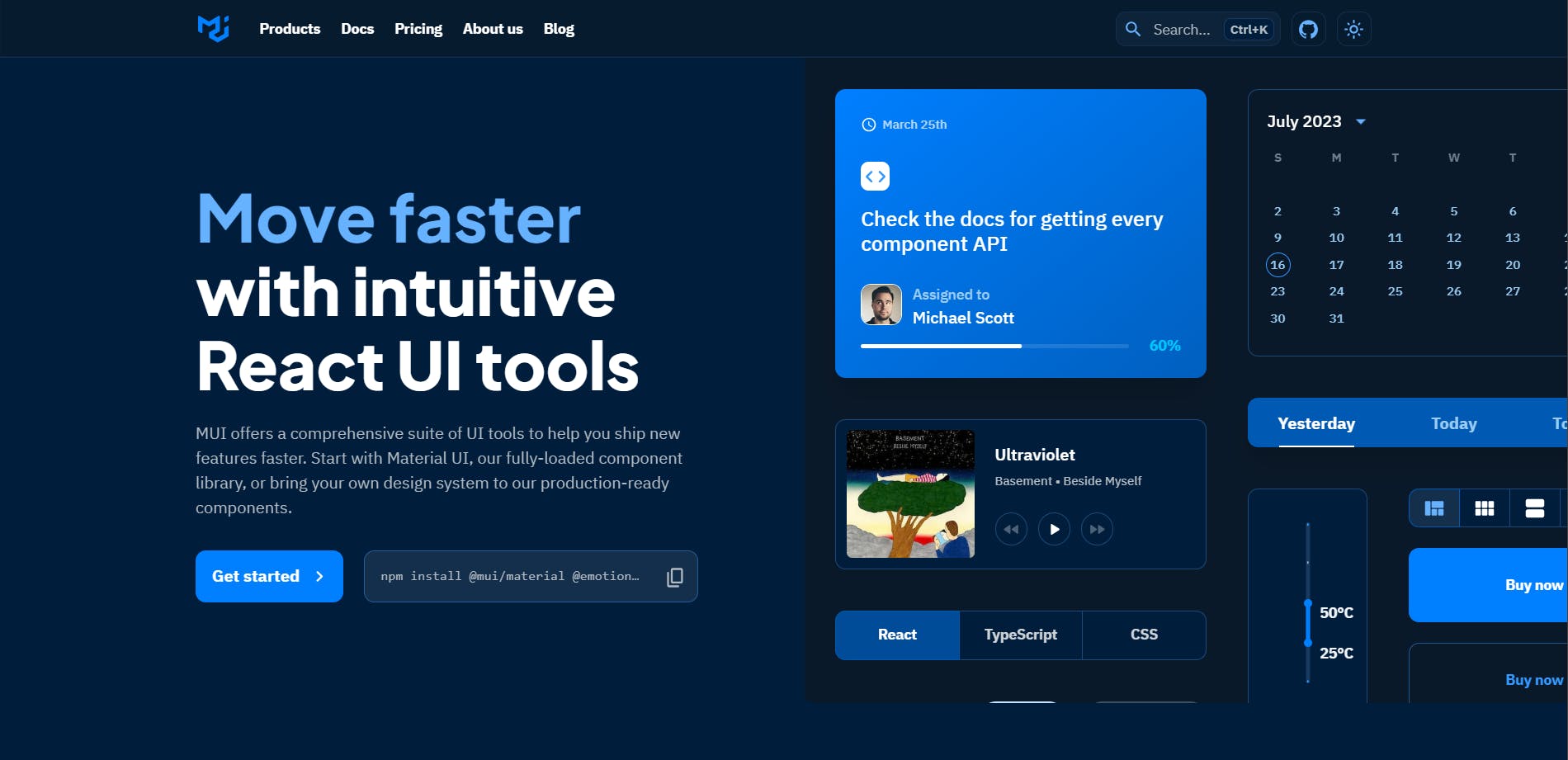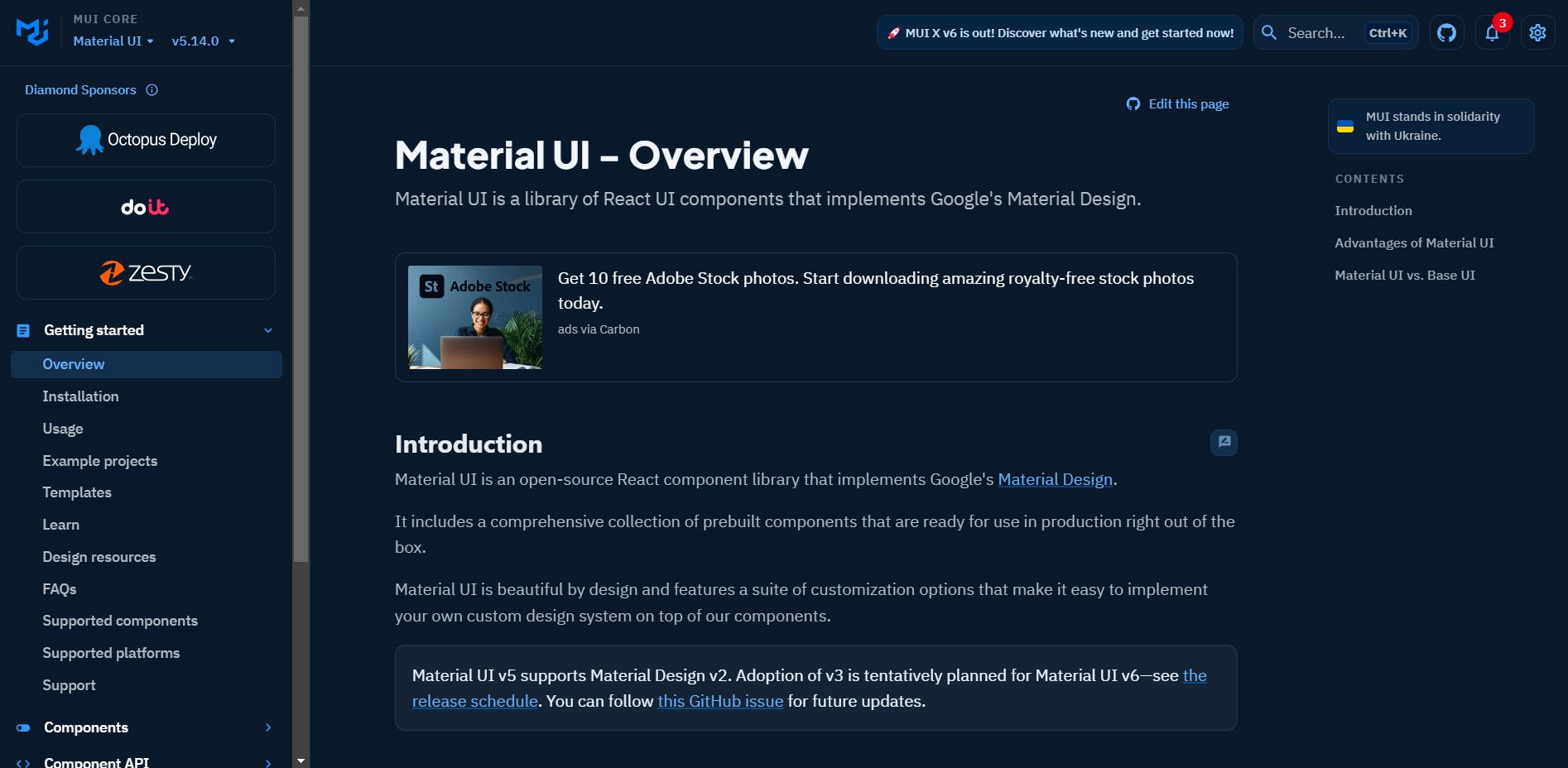Table of contents
Introduction to Material UI
Material-UI is a popular open-source user interface (UI) framework for building web applications. It provides a set of pre-built and customizable React components that follow the principles of Google's Material Design. Material Design is a design language developed by Google, focusing on creating visually appealing and intuitive user interfaces.

Material-UI offers a wide range of ready-to-use UI components, such as buttons, forms, navigation bars, dialog boxes, and more. These components are designed with a modern and sleek look, following the Material Design guidelines. They come with built-in responsive behavior, accessibility features, and consistent styling.
The framework encourages the use of React, a JavaScript library for building user interfaces, and leverages its component-based architecture. With Material-UI, developers can easily integrate and customize these components to create visually appealing and responsive web applications. It provides theming capabilities to customize the overall look and feel of the application based on a specific color palette and design scheme.
Material-UI has gained popularity due to its ease of use, comprehensive documentation, and active community support. It simplifies the process of building aesthetically pleasing and consistent user interfaces, making it a preferred choice for many developers and organizations.
The official website for Material-UI is: https://mui.com/
Material-UI is an open-source project hosted on GitHub. You can find the repository at the following URL: https://github.com/mui-org/material-ui
History of Material UI
Material-UI was initially released in 2014 by Olivier Tassinari and Matt Brookes as a React implementation of Google's Material Design guidelines. The project aimed to provide a comprehensive set of UI components and tools for developers to build web applications with a modern and visually appealing design.
The early versions of Material-UI gained popularity within the React community, and it quickly became one of the most widely used UI libraries for React-based projects. It offered developers a way to create consistent and beautiful user interfaces by following the principles of Material Design, which was gaining traction across various platforms and devices.

Over the years, Material-UI has undergone several major updates and improvements. The framework has evolved to align with the latest versions of React and the changing needs of developers. New components, features, and improvements have been introduced, expanding the capabilities of Material-UI and making it more versatile.
The project's development has been driven by an active community of contributors who have contributed to its growth and success. The community provides support, contributes code, and helps maintain and improve the framework.
Material-UI has been widely adopted by developers and used in numerous web applications across different industries. Its popularity can be attributed to its robustness, flexibility, and adherence to the Material Design guidelines. The framework continues to evolve, with regular updates and enhancements, ensuring that it remains a reliable and modern choice for building web interfaces.
Follow for more
Linkedin: https://www.linkedin.com/in/prahladinala/
Github: https://github.com/prahladinala/
Instagram: https://instagram.com/prahlad.inala/
Twitter: https://twitter.com/prahladinala
Figma Community: https://www.figma.com/@prahladinala
Dribbble: https://dribbble.com/prahladinala
Behance: https://www.behance.net/prahladinala
Personal Portfolio: https://prahladinala.in
ToolMate: https://toolmate.co.in

